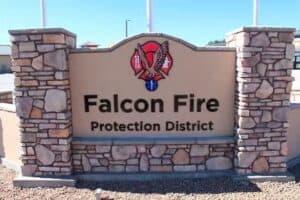The 2012 Waldo Canyon and the 2013 Black Forest fires have brought attention to insurance issues for those directly affected by the wildfires, those whose homes survived and those with a desire to live in an area that is at an increased risk for wildfires. Many local residents have stories ñ- or know someone who does ñ- about denials of coverage and conflicting mitigation guidance from insurance companies.Representatives from two companies rumored to have completely ceased writing homeownersí policies in Black Forest ó Allstate and USAA ó quenched those rumors. Stephanie Howell, corporate relations division manager at Allstate, said her company still insures Black Forest residents and encourages residents in high fire risk areas to mitigate their properties. ìWe believe in working with our homeowners to improve mitigation,î she said.Rebecca Hirsch, director of public relations for USAA, said in an email that USAA is still offering insurance policies for homeowners in the state of Colorado and specifically in Black Forest. ìWe do review each property based on its specific risk level to determine acceptability,î she said. ìIf we determine the property is at high or extreme wildfire risk, we refer our members to the USAA Insurance Agency, which may be able to assist members with other coverage options through its alliances with other insurance carriers.î She added that USAA does provide members with ìaccess to multiple programs and services to help them mitigate wildfire-related property loss.îCarole Walker, executive director of the Rocky Mountain Insurance Information Association, said insurance companies are getting stricter about what they insure and are trying to rate risk properly. ìWhile insurance companies use Firewise and local building codes, they also use their own underwriting guidelines; and those are specific to each company,î she said. Walker said there is currently ìno crisisî in the availability of homeownersí insurance for high fire risk areas; but, she added, ìCompanies are still going to look at different risk factors because theyíre the ones taking on that risk.î Some of the risk factors include distance from a fire station, property access for firefighting equipment, building materials used and defensible space.One point of confusion that seems to plague homeowners in Black Forest and other high fire risk areas is a disparity in mitigation guidelines provided by insurance company representatives. Falcon Fire Protection District Fire Marshal Margo Humes said that over the last three years, even before the Waldo Canyon fire, she has fielded ìmultipleî calls from homeowners being given vague or conflicting information by their insurance companies concerning mitigation practices. ìSome (insurance company representatives) interpret that mitigation 100 feet from the home means 100 feet of clear cut,î she said. Humes cited a recent example in which a person planning to build a new home in a forested area of the Falcon fire district was told by an insurance representative to cut down all trees within 100 feet of the structure.According to the Firewise website, ìPreparing your property for fire does not mean removing all your trees.î Humes said she thinks insurance companies are supporting the Firewise program, but they are inconsistent in their interpretation of the concepts.Shelter Insurance agent Rod Sanders said his company bases mitigation recommendations on Firewise guidelines. However, he said, ìEvery company is doing it a little differently.î Rebecca Hirsch from USAA said, ìEach property is assessed on a case-by-case basis. We donít require some specific actions such as cutting down all trees, brushes, shrubs within 100 feet, but a memberís mitigation efforts may impact our determination of whether to insure a property.î Walker said the full range of factors used to determine a propertyís fire risk can vary by insurer. ìDifferent companies have different underwriting guidelines,î she said.ìThereís no easy answers,î Walker said. ìRisk doesnít go away.î But she pointed out that itís a shared risk between homeowners and insurance companies, especially in areas prone to wildfire. ìYou need to use scientifically proven methods to mitigate.î She advised homeowners to do their research, talk to their insurance companies and shop around if necessary. ìPolicies are available, but they may cost more,î she said.




